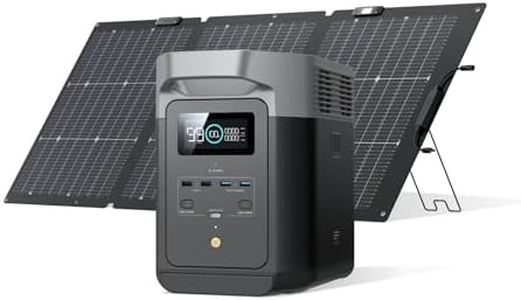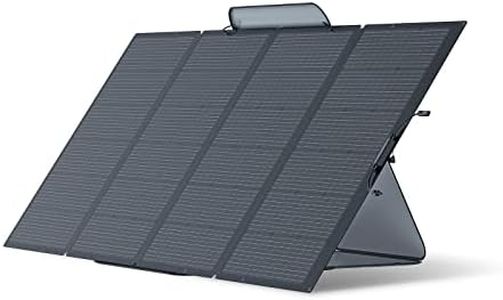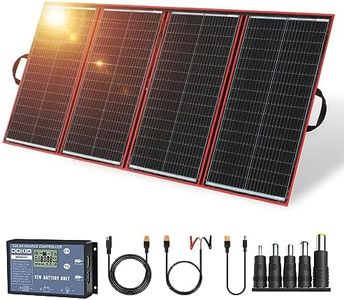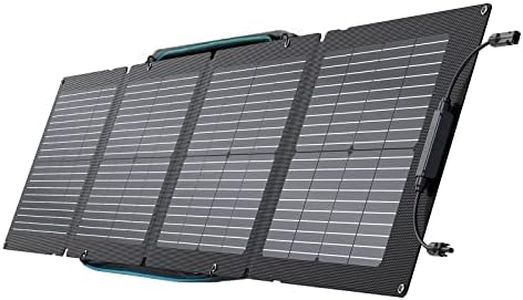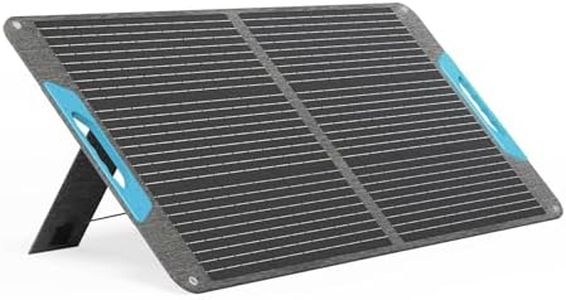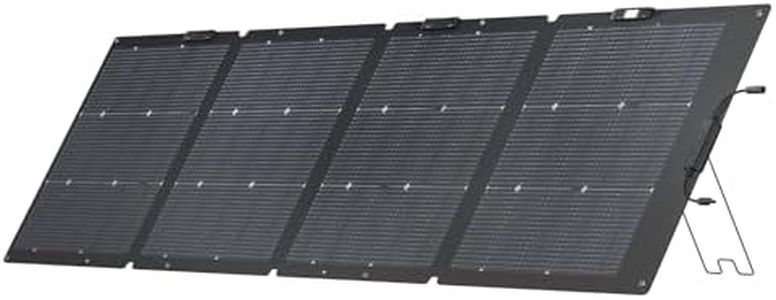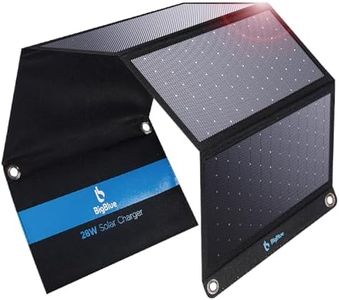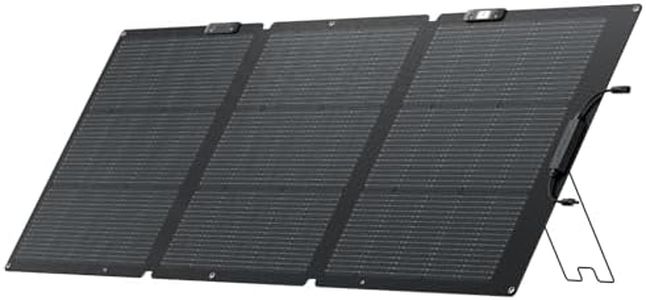We Use CookiesWe use cookies to enhance the security, performance,
functionality and for analytical and promotional activities. By continuing to browse this site you
are agreeing to our privacy policy
10 Best Portable Solar Panels
From leading brands and best sellers available on the web.By clicking on a link to a third party's website, log data is shared with that third party.
Buying Guide for the Best Portable Solar Panels
When choosing a portable solar panel, it's important to understand your own energy needs and how you plan to use the panel. Whether you're camping, traveling, or preparing for emergencies, the right solar panel can provide a reliable source of power anywhere. Think about the devices you'll want to power, how often you'll use the panel, and where you'll be using it—this will help you focus on the key features that matter most for your situation.Wattage (Power Output)Wattage refers to how much electricity the solar panel can produce under ideal conditions. This is crucial because it determines what devices you can power and how quickly you can charge them. Lower wattage panels (around 10-40W) are suitable for charging small gadgets like phones and cameras, while mid-range (40-100W) works for tablets and small laptops. Higher wattages (100W and above) are best for running larger devices or charging multiple items at once. To pick the right wattage, estimate the total power draw of the devices you plan to use, then choose a panel with a bit more capacity for efficiency and cloudy days.
Portability (Size and Weight)Portability is about how easy it is to carry and set up the solar panel. Smaller and lighter panels are ideal for hiking or backpacking since they're easy to transport, but they usually generate less power. Larger or foldable panels offer more power but can weigh more or take up more space, making them better suited for car camping or situations where you don't have to carry them over long distances. Choose the size and weight that matches how you'll be traveling and carrying your gear.
Panel Type (Monocrystalline vs Polycrystalline vs Thin-film)The type of solar cell affects efficiency and durability. Monocrystalline panels are more efficient and compact, offering higher power for their size, making them ideal when space is limited. Polycrystalline panels are usually less expensive but slightly larger and less efficient. Thin-film panels are the lightest and most flexible, though they typically produce less power and are less efficient. If you need to maximize power in a small space, monocrystalline is often best. For the best balance of cost and performance outdoors, polycrystalline works well, and for extreme portability or flexible installation, thin-film is an option.
Durability and Weather ResistanceDurability describes how well the solar panel handles outdoor conditions, including rain, dust, and impacts. Look for features like water resistance (often rated with an IP code), scratch-proof surfaces, and rugged frames. If you'll be in rough environments or expect exposure to the elements, prioritize a panel with high durability and weather resistance to ensure it lasts and performs reliably.
Connectivity and OutputsThis refers to the kinds of devices you can plug into the solar panel. Some panels have USB ports for phones and small gadgets, while others have DC or even AC outputs for bigger devices. Consider what you need to charge—simple USB ports are fine for phones, but for cameras, laptops, or power stations, you may need panels with more versatile outputs. Check the specs to ensure compatibility with your devices.
Ease of SetupEase of setup is about how quickly and simply you can unfold or position your solar panel and start charging. Some panels have built-in stands or kickstands that help you angle the panel toward the sun for better efficiency, while others are designed for hanging or laying flat. If you'll be setting up and taking down your panel often, look for one that’s user-friendly and requires minimal effort or extra equipment.

